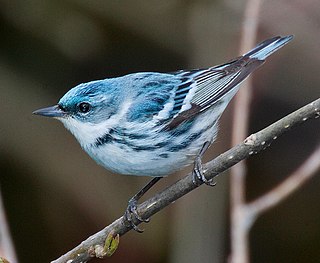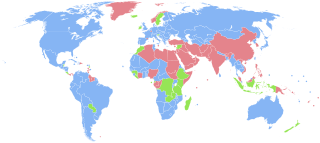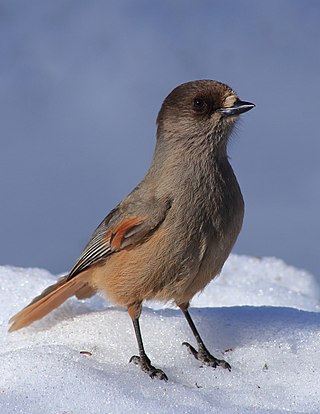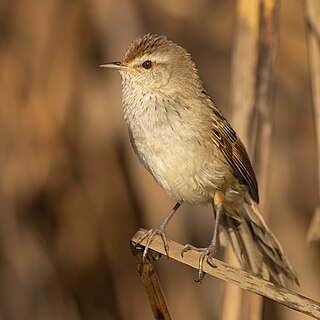
The Acrocephalus warblers are small, insectivorous passerine birds belonging to the genus Acrocephalus. Formerly in the paraphyletic Old World warbler assemblage, they are now separated as the namesake of the marsh and tree warbler family Acrocephalidae. They are sometimes called marsh warblers or reed warblers, but this invites confusion with marsh warbler and reed warbler proper, especially in North America, where it is common to use lower case for bird species.

The sedge warbler is an Old World warbler in the genus Acrocephalus. It is a medium-sized warbler with a brown, streaked back and wings and a distinct pale supercilium. Sedge warblers are migratory, crossing the Sahara to get from their European and Asian breeding grounds to spend winter in Africa. The male's song is composed of random chattering phrases and can include mimicry of other species. The sedge warbler is mostly insectivorous.

The marsh warbler is an Old World warbler currently classified in the family Acrocephalidae. It breeds in temperate Europe and the western Palearctic and winters mainly in southeast Africa. It is notable for incorporating striking imitations of a wide variety of other birds into its song.

The great reed warbler is a Eurasian in the passerine genus Acrocephalus.

The black-throated blue warbler is a small passerine bird of the New World warbler family. Its breeding ranges are located in the interior of deciduous and mixed coniferous forests in eastern North America. Over the cooler months, it migrates to islands in the Caribbean and Central America. It is very rarely found in western Europe, where it is considered to be a non-indigenous species. The black-throated blue warbler is sexually dimorphic; the adult male has a black face and cheeks, deep blue upperparts and white underparts, while the adult female is olive-brown above and light yellow below.

The cerulean warbler is a small songbird in the family Parulidae. It is a long-distance migrant, breeding in eastern North American hardwood forests. In the non-breeding season, it winters on the eastern slope of the Andes in South America, preferring subtropical forests.

A sex ratio is the ratio of males to females in a population. As explained by Fisher's principle, for evolutionary reasons this is typically about 1:1 in species which reproduce sexually. However, many species deviate from an even sex ratio, either periodically or permanently. Examples include parthenogenic species, periodically mating organisms such as aphids, some eusocial wasps, bees, ants, and termites.

The Cape Verde warbler is an Old World warbler in the genus Acrocephalus. It is also known as the Cape Verde cane warbler or Cape Verde swamp warbler, and in Creole as tchota-de-cana or chincherote. It breeds on Santiago, Fogo, and São Nicolau in the Cape Verde Islands. It previously bred on Brava. This species is found in well-vegetated valleys, avoiding drier areas. It nests in reedbeds, two to three eggs being laid in a suspended nest.

The Siberian jay is a small jay with a widespread distribution within the coniferous forests in North Eurasia. It has grey-brown plumage with a darker brown crown and a paler throat. It is rusty-red in a panel near the wing-bend, on the undertail coverts and on the sides of the tail. The sexes are similar. Although its habitat is being fragmented, it is a common bird with a very wide range so the International Union for Conservation of Nature has assessed its conservation status as being of "least concern".
Cousin Island is a small granitic island of the Seychelles, lying 2 km (1.2 mi) west of Praslin. It is a nature reserve protected under Seychelles law as a Special Reserve. It is managed by Nature Seychelles, a national nonprofit organization and Partner of BirdLife International, by which it has been identified as an Important Bird Area.

The Australian reed warbler is an Old World warbler in the genus Acrocephalus and is the only Acrocephalus species native to Australia. It has also been observed in Papua New Guinea and nearby islands. The name Acrocephalus refers to the peaked crown found on reed warblers in this genus and can be translated to mean "topmost head" in Greek. The species name australis is translated to mean "southern" in Latin, and refers to the species range, Australia. In its western range the Australian reed warbler is also known as "Koordjikotji" in the local Aboriginal language of Perth and its surrounds.
Sex allocation is the allocation of resources to male versus female reproduction in sexual species. Sex allocation theory tries to explain why many species produce equal number of males and females.
Cousine Island is a small granitic island 30 ha in the Seychelles 6 km (4 mi) west of Praslin Island. It is a combination luxury resort and since 1992 a nature preserve.
Cooperative breeding is a social system characterized by alloparental care: offspring receive care not only from their parents, but also from additional group members, often called helpers. Cooperative breeding encompasses a wide variety of group structures, from a breeding pair with helpers that are offspring from a previous season, to groups with multiple breeding males and females (polygynandry) and helpers that are the adult offspring of some but not all of the breeders in the group, to groups in which helpers sometimes achieve co-breeding status by producing their own offspring as part of the group's brood. Cooperative breeding occurs across taxonomic groups including birds, mammals, fish, and insects.

The Seychelles white-eye is a rare warbler-like perching bird from the family of white-eyes (Zosteropidae). It is endemic to the Seychelles. At one time thought to be extinct, it was rediscovered and is now listed as Vulnerable by the IUCN.

The brown songlark, also Australian songlark, is a small passerine bird found throughout much of Australia. A member of the family Locustellidae, this species is notable for sexual size dimorphism, among the most pronounced in any bird. It is a moderate-sized bird of nondescript plumage; the female brownish above and paler below, the larger male a darker brown.

The Acrocephalidae are a family of oscine passerine birds, in the superfamily Sylvioidea.

The little grassbird is a species of Old World warbler in the family Locustellidae. It is found in Australia and in West Papua, Indonesia. These sexually monomorphic birds are found in reed beds, rushes, lignum swamps and salt marshes of Southeastern Australia.

The white-winged fairywren is a species of passerine bird in the Australasian wren family, Maluridae. It lives in the drier parts of Central Australia; from central Queensland and South Australia across to Western Australia. Like other fairywrens, this species displays marked sexual dimorphism and one or more males of a social group grow brightly coloured plumage during the breeding season. The female is sandy-brown with light-blue tail feathers; it is smaller than the male, which, in breeding plumage, has a bright-blue body, black bill, and white wings. Younger sexually mature males are almost indistinguishable from females and are often the breeding males. In spring and summer, a troop of white-winged fairywrens has a brightly coloured older male accompanied by small, inconspicuous brown birds, many of which are also male. Three subspecies are recognised. Apart from the mainland subspecies, one is found on Dirk Hartog Island, and another on Barrow Island off the coast of Western Australia. Males from these islands have black rather than blue breeding plumage.

The Oriental reed warbler is a passerine bird of eastern Asia belonging to the reed warbler genus Acrocephalus. It was formerly classified as a subspecies of the great reed warbler of the western Palearctic.

















